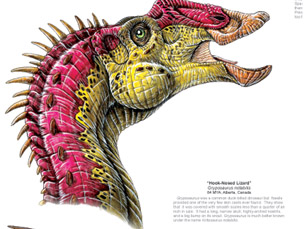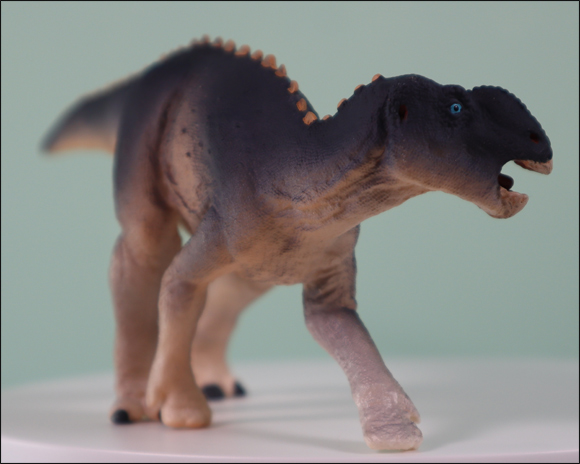Hadrosaurs – Key to Success – A Dental Battery
Scientists from the University of Utah have published a paper on a superbly preserved skull of a Late Cretaceous duck-billed dinosaur that demonstrates in glorious detail why this group of animals were so successful.
Skull Discovery
The skull discovered in a remote region of Utah – the Grand Staircase-Escalante National Monument (so remote that it was the last place on the US continent to be mapped), was unearthed by an expedition in 2003, but only properly studied and evaluated in 2005.
The skull has been identified as belonging to an adult Gryposaurus, a member of the hadrosaurine lineage, distinguished from Lambeosaurines by wide premaxillary rostrums, a cir-cumnarial depression surrounding the external naris, generally an enlarged and bony naris and the presence of a prominent anteromedial process of the maxilla. The species has been described as G. monumentensis, named after the area in which it was found. A number of Campanian species of gryposaurs are known most have been recovered from the Dinosaur Provincial Park formation of Alberta, Canada.
Duck-billed Dinosaur
This remarkable skull has permitted the team from Utah University to closely examine the teeth of hadrosaurs. This skull has over 300 teeth in the maxilla and dentary, making a very effective grinding surface for crushing and pulping plant material. Another 500 teeth were embedded in the jawbones, ready to erupt and replace any other teeth that became worn.
Other bones believed to belong to this species have been unearthed at the dig site and palaeontologists have estimated that this animal could reach lengths of 10 metres or more. One palaeontologist, Scott Sampson, commented that this robust animal was the “Arnold Schwarzenegger” of its dinosaur family. The powerful jaws would have enabled these animals to tackle a whole variety of plant food, but further research is required to determine Gryposaurus’s dietary preferences.
Gryposaurus
Gryposaurus was named after its nasal arch, the name is from the Greek meaning “hook-nosed lizard”. Muscles in the skull enabled the animal to chew food in a similar way to bovines of today (the actual process is different, cows for example grind their jaws from side to side, hadrosaurs would have ground food in a more up and down motion). The broad beak would have cropped vegetation and the teeth in combination with the animal’s tongue and cheeks would have processed the plant material very effectively. Alternating between a quadrupedal and bipedal stance Gryposaurus could have fed on vegetation from ground level up to about 4 metres.
A Replica of the Duck-billed Dinosaur Gryposaurus
Picture credit: Everything Dinosaur
The picture (above) shows the Wild Safari Prehistoric World Gryposaurus model.
To view this range: Wild Safari Dinos Prehistoric World Replicas.
Old “hook nose” would have certainly been an impressive sight, an example of the many wonderful varieties of peculiar looking dinosaur. No plants would have been safe from a herd of them as they wandered the late Cretaceous plains looking for their next meal.
An Artists Impression of Gryposaurus

Picture credit: Everything Dinosaur Posters (Weird Dinosaurs)
The image has been taken from a colourful and fascinating poster which illustrates some of the bizarre visages of dinosaurs. Facial ornamentation may have played an important role in species recognition, competition for mates and inter-species rivalry, this poster illustrates some of the more amazing faces of dinosaurs. Gryposaurus with its enlarged nasal region is typical of the dinosaurs featured.
The poster is called “Weird Dinosaurs” and it is available from Everything Dinosaur.
To view the products available from Everything Dinosaur: Everything Dinosaur – Toys and Gifts.







Leave A Comment